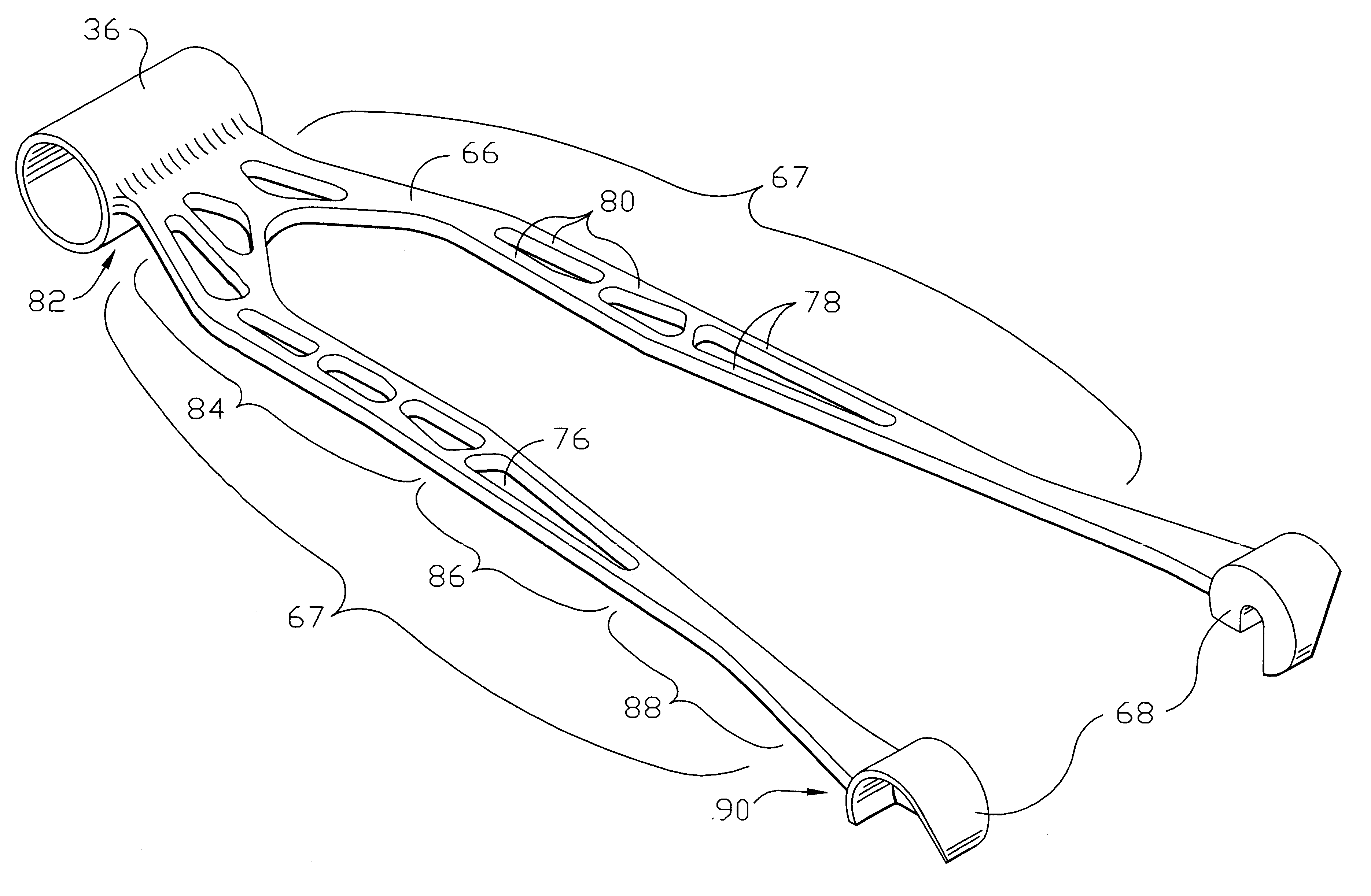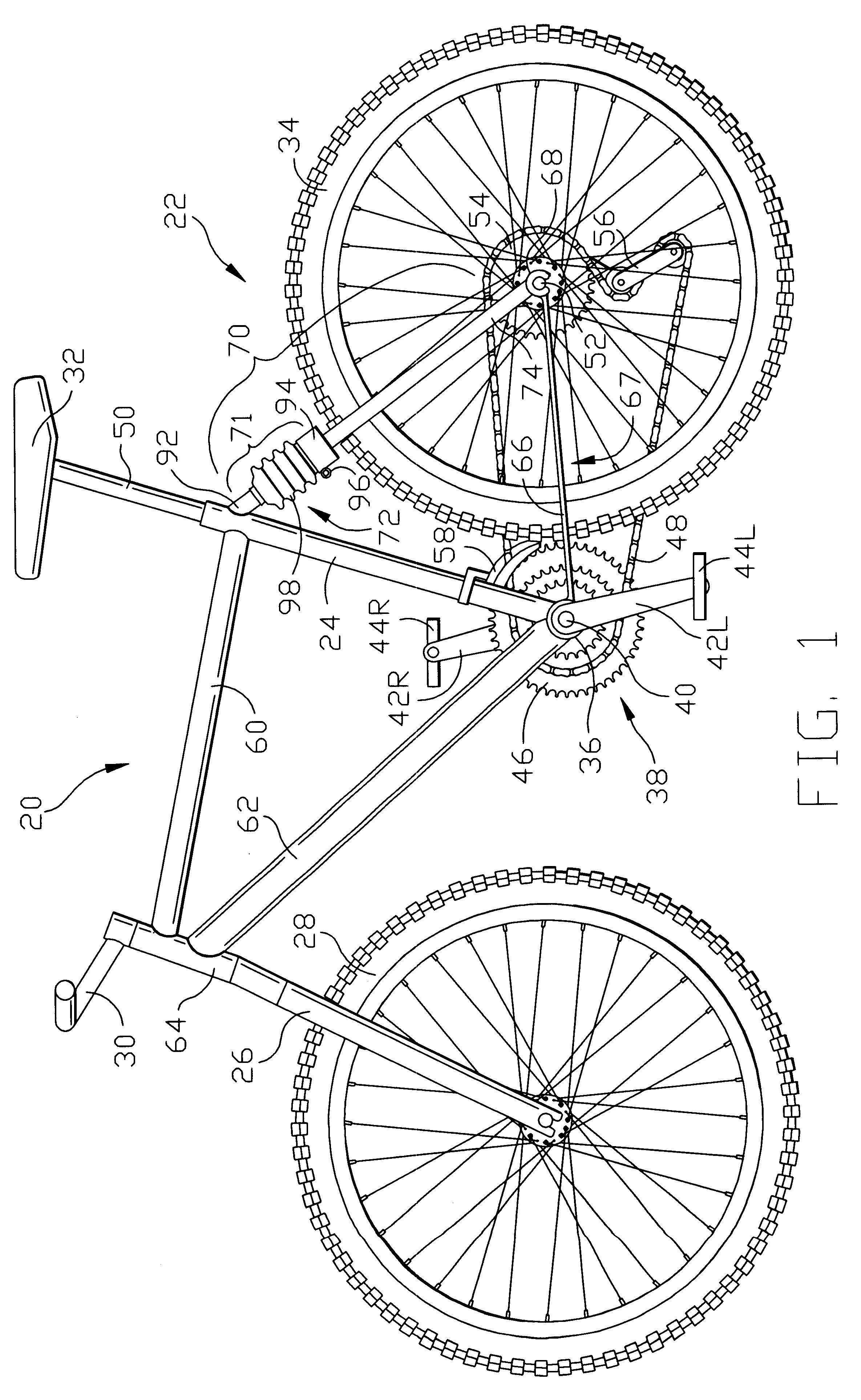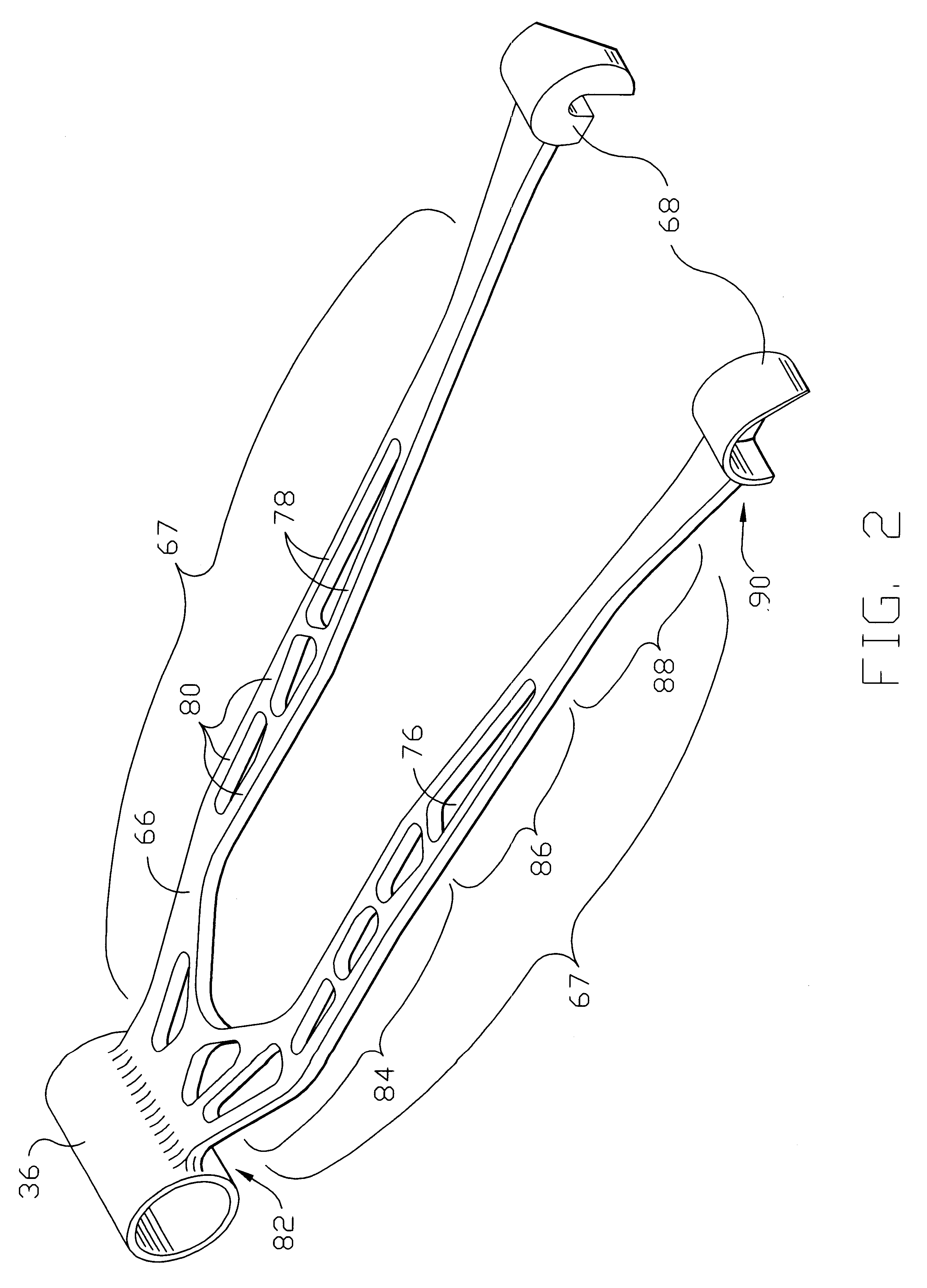Pivotless rear suspension system for bicycles
a rear suspension and bicycle technology, applied in the direction of cycle springs, foldable cycles, cycle equipments, etc., can solve the problems of high manufacturing cost, difficult maintenance, and limited travel of most rear suspension systems used to date, and achieve low maintenance requirements, high reliability, and low manufacturing cost
- Summary
- Abstract
- Description
- Claims
- Application Information
AI Technical Summary
Benefits of technology
Problems solved by technology
Method used
Image
Examples
Embodiment Construction
of the Invention--FIG. 1
FIG. 1 shows a side elevational view of the preferred embodiment of a bicycle with a frame according to the instant invention. The frame has two parts, a main portion 20 customarily called the front triangle (although it normally has four tubes) and a rear frame portion 22, known as the rear triangle. Both triangles share a common side formed by a seat tube 24. Frame portions 20 and 22 will be described in detail below. A front fork 26 is mounted to the front of main frame portion 20 on bearings, not shown, to allow the bicycle to be steered, in a manner well known in the art. A front wheel 28 and a set of handlebars 30 are attached to fork 26 in the conventional manner. Fork 26 may incorporate a front wheel suspension, not shown, if desired. A seat 32 is secured to the upper portion of seat tube 24.
Rear frame portion 22 extends rearwardly from main frame portion 20 and seat tube 24. A rear wheel 34 is mounted to the rearmost apex of the rear frame portion. T...
PUM
 Login to View More
Login to View More Abstract
Description
Claims
Application Information
 Login to View More
Login to View More - R&D
- Intellectual Property
- Life Sciences
- Materials
- Tech Scout
- Unparalleled Data Quality
- Higher Quality Content
- 60% Fewer Hallucinations
Browse by: Latest US Patents, China's latest patents, Technical Efficacy Thesaurus, Application Domain, Technology Topic, Popular Technical Reports.
© 2025 PatSnap. All rights reserved.Legal|Privacy policy|Modern Slavery Act Transparency Statement|Sitemap|About US| Contact US: help@patsnap.com



